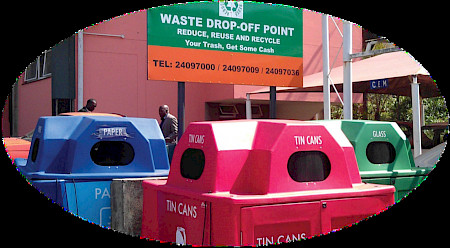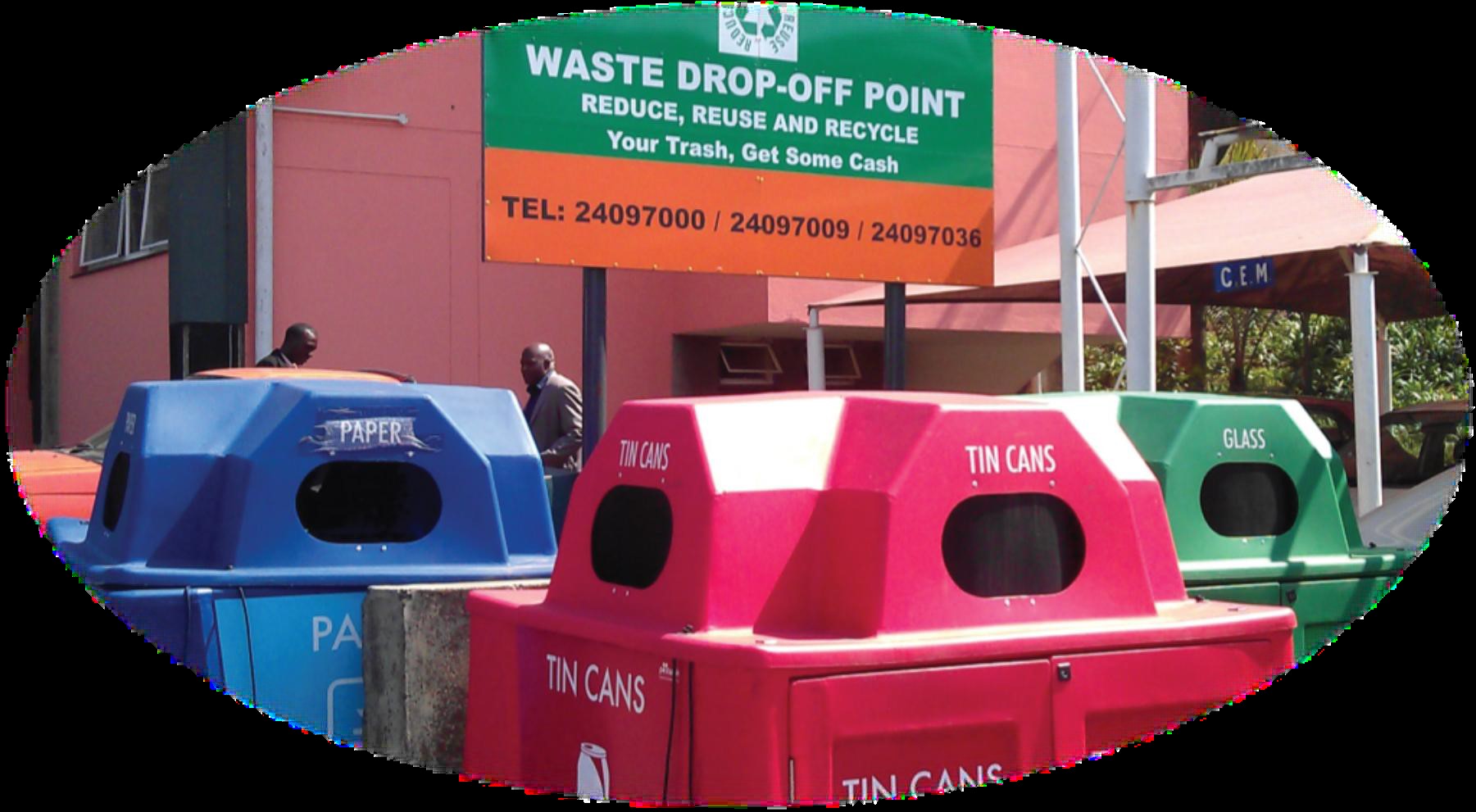Location: MBABANE, ESWATINI
Keywords:
"Household sorting"
" Recycling"
" Local waste collection stations"
" Innovative financing"
" Waste station user sorting"
WASTE RECYCLING REDUCES ILLEGAL DUMPING AND LITTER IN URBAN AREAS
The Recycling Pilot Project in Mbabane was executed in the course of developing a draft National Solid Waste Management Strategy (NSWMS) for Swaziland, where the need for developing a recycling initiative to strengthen the existing recovery of post-consumer waste in Urban areas was identified.
The recycling pilot project established recycling of non- hazardous wastes from various sources such as household, commercial and industrial facilities as the focus of the project. The Mbabane City Council indicated interests to sort waste particularly from source to reduce disposal of post-consumer packaging. The project succeeded in achieving the following objectives:
- Launching and maintaining an awareness campaign in the City;
- Collection and recycling 30% of post-consumer recyclable material;
- Collection and recycling 50% of all recyclable materials from commercial facilities;
- Recovering 50% of recycled paper from Government Offices.
Swaziland Environmental Authority, the cooperative body on environmental issues, steered the initiative to establish and maintain recycling systems in Mbabane. The key players actively involved include representatives from various sectors which include; Industry, Government (National & Local), NGOs and Schools. The Recycling Pilot Project was executed in 2002 and the measures implemented continue to function ten years after.
The Pilot Project explored the option of testing the effectiveness of a combination of a Drop-off Centre and Buy-Back Centre approaches to help in recovering post-consumer packaging and paper wastes. The various recycling facilities were located in areas with a sizeable commuter traffic. The drop-off centres relied solely on voluntary recycling of materials by the general public who are not seeking monetary compensation for actively separating waste from source, while the buy-back centres pay for recyclable materials brought into the centres. Consequently, the drop-off centres recorded more success rates in middle to high income areas in comparison to the buy-back centres which thrived in the low-income areas where it is an economic opportunity both for individuals and businesses
Prior to execution, the main players in the recycling industry had been engaged to obtain information on current happenings in the industry, establish attitudes of the Industry to the concept of Buy-backs centres, determine a market for recyclable materials and assure sustainability of the project. In total, fifteen (15) recycling companies were identified in the Swaziland region which recover various materials using either the “Buy-back or Drop-off mechanism”. All identified companies export the materials to other Countries in Southern Africa for further treatment.
For the effectiveness of both mechanisms, households were given pamphlets which provided details on how to achieve segregation. The various waste classes to be segregated included: a) organic/ wet waste, b) dry waste and c) domestic hazardous waste. The initiative was able to come with the following; two (2) buy-back centres, two (2) community recycling centres, Twenty- four (24) school drop- off centres, commercial business and office recycling and Four (4) institutional (universities) recycling.
